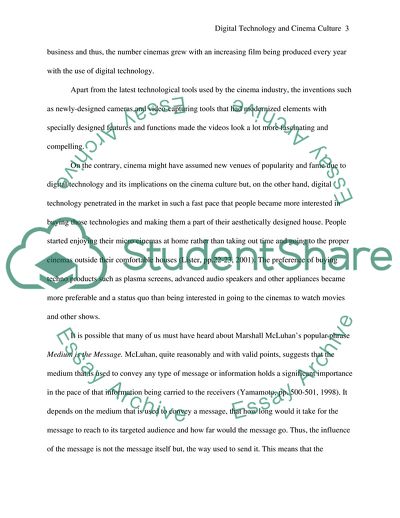Cite this document
(Digital Technology and Cinema Culture Case Study, n.d.)
Digital Technology and Cinema Culture Case Study. Retrieved from https://studentshare.org/visual-arts-film-studies/1750272-4with-reference-to-relevant-theoretical-debates-explore-the-impact-of-digital-technologies-on-cinema-culture
Digital Technology and Cinema Culture Case Study. Retrieved from https://studentshare.org/visual-arts-film-studies/1750272-4with-reference-to-relevant-theoretical-debates-explore-the-impact-of-digital-technologies-on-cinema-culture
(Digital Technology and Cinema Culture Case Study)
Digital Technology and Cinema Culture Case Study. https://studentshare.org/visual-arts-film-studies/1750272-4with-reference-to-relevant-theoretical-debates-explore-the-impact-of-digital-technologies-on-cinema-culture.
Digital Technology and Cinema Culture Case Study. https://studentshare.org/visual-arts-film-studies/1750272-4with-reference-to-relevant-theoretical-debates-explore-the-impact-of-digital-technologies-on-cinema-culture.
“Digital Technology and Cinema Culture Case Study”. https://studentshare.org/visual-arts-film-studies/1750272-4with-reference-to-relevant-theoretical-debates-explore-the-impact-of-digital-technologies-on-cinema-culture.


